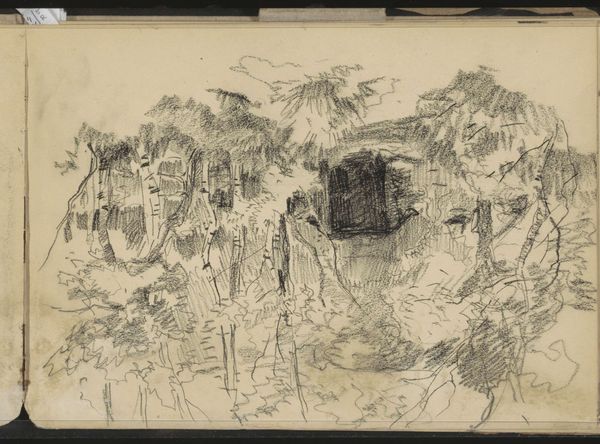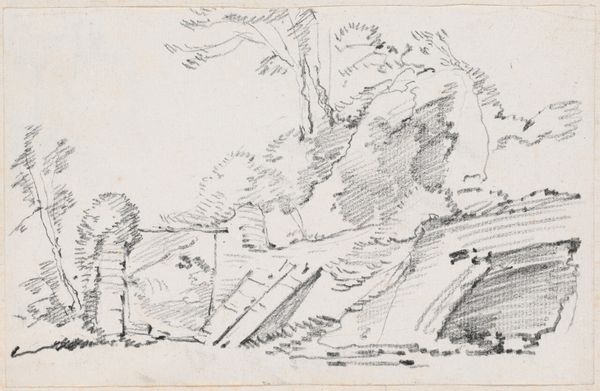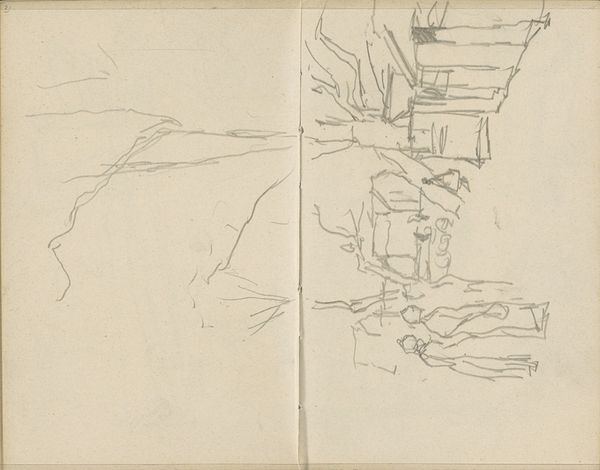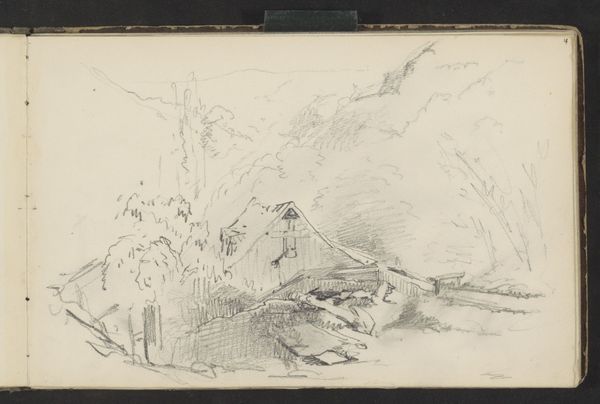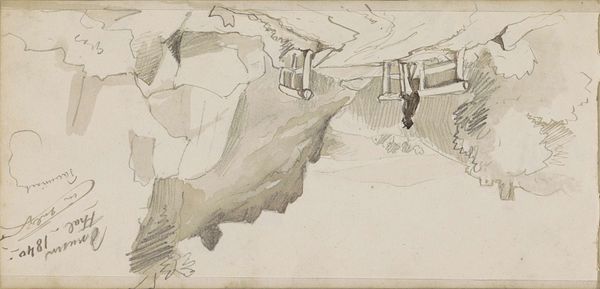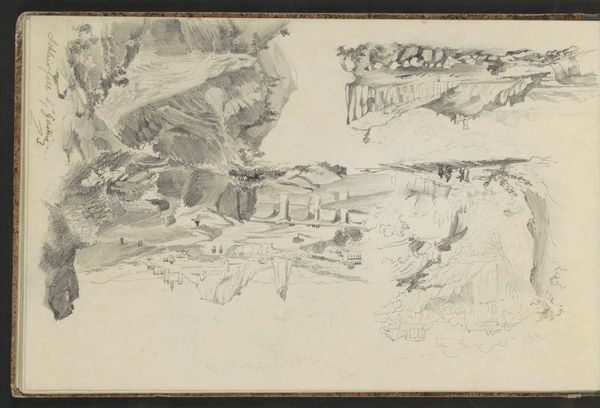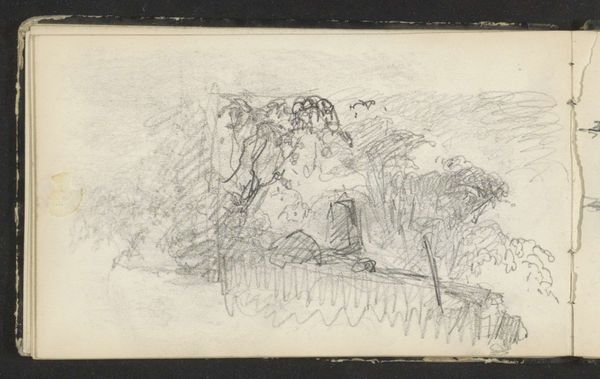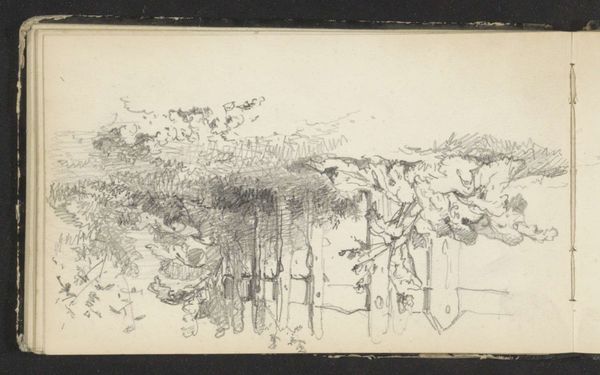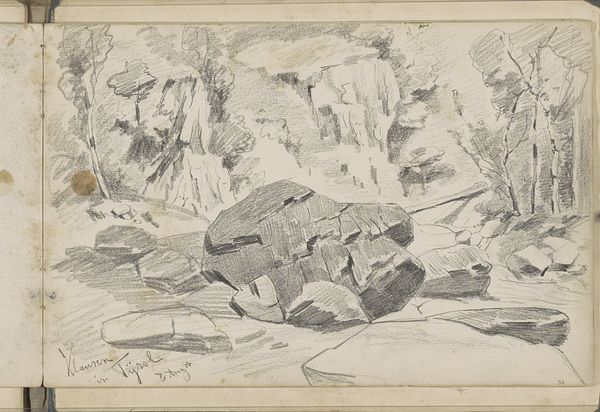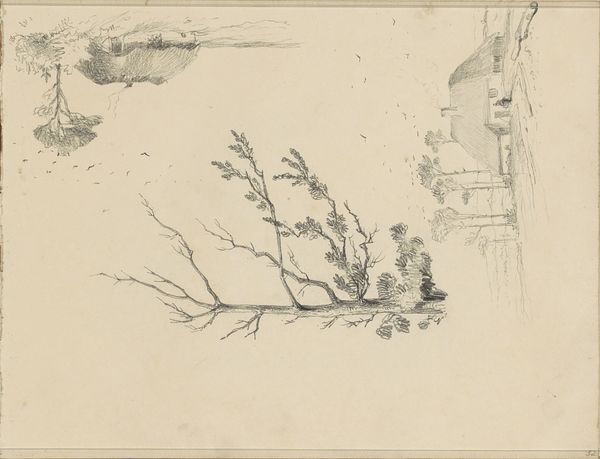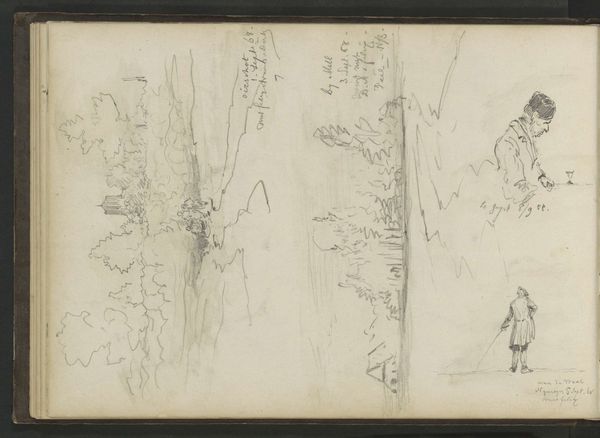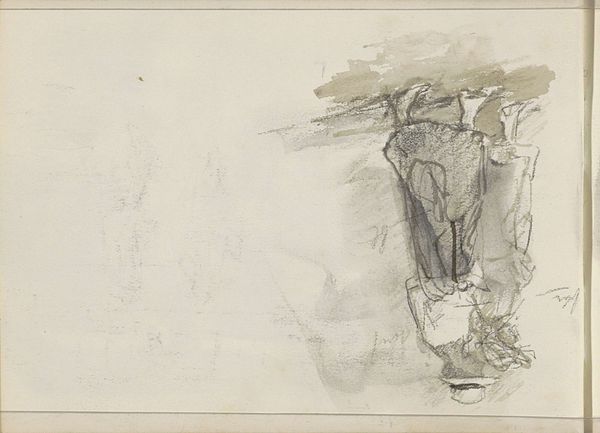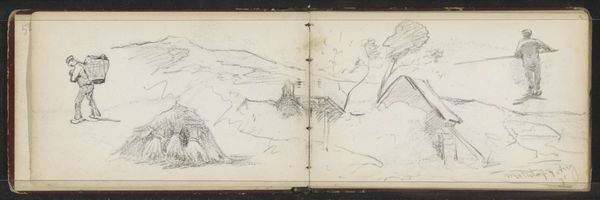
drawing, pencil
#
drawing
#
landscape
#
pencil
#
realism
Dimensions: height 225 mm, width 295 mm
Copyright: Rijks Museum: Open Domain
Editor: This drawing, "Huis te Klausen in Tirol," created in 1874 by Willem Cornelis Rip, uses only pencil on paper. The scene feels quite serene, almost lonely. What do you make of this seemingly simple landscape? Curator: I see a commentary on the relationship between man and nature, characteristic of 19th-century Realism. Rip isn't just documenting a picturesque view. Consider how the drawing portrays the house in Klausen relative to its environment. Does it appear integrated, dominant, or something else? Editor: I think it seems dwarfed by the landscape, like it’s clinging to the mountainside. The rough texture of the rock contrasts so strongly with the flat wall of the building. Curator: Exactly. Realist artists were interested in portraying the world as they saw it, absent of romanticism, to explore the human condition in contemporary life. In what ways would an image like this one impact a society facing unprecedented urbanization, with a focus on public and rural experiences? Editor: Well, it might prompt feelings of nostalgia for a simpler, more natural existence, maybe even spark debates about the impact of industrialization. Did travel and accessibility to rural areas play a role in shaping his subject matter, too? Curator: Absolutely. The rise of tourism and accessible travel in the late 19th century meant artists, and the public, could engage with these landscapes directly. How might that direct engagement shape the politics of landscape imagery in this era? Editor: I hadn’t thought about that! This makes me want to learn more about the cultural contexts that shape not just art, but its reception, too. Curator: Exactly, considering these things makes us more sensitive to what the image might have represented then, and what it may represent to us now.
Comments
No comments
Be the first to comment and join the conversation on the ultimate creative platform.
